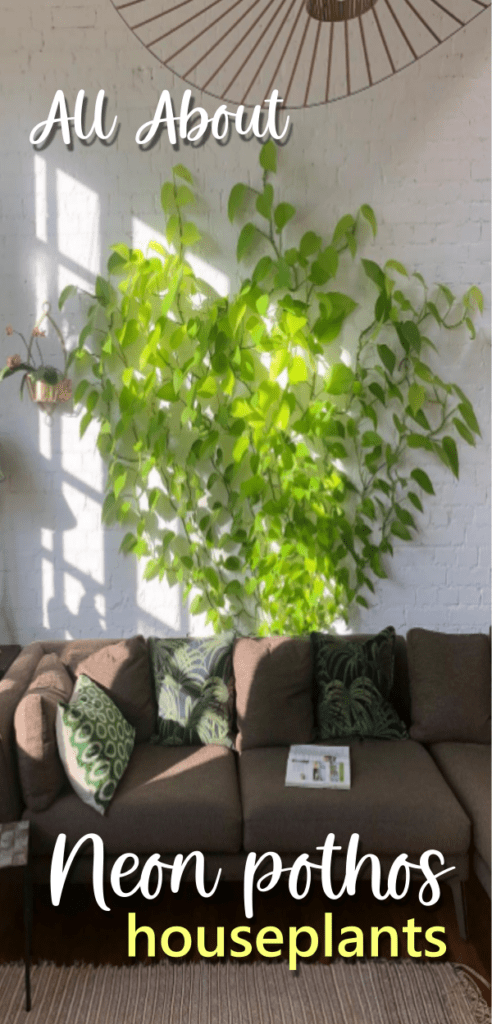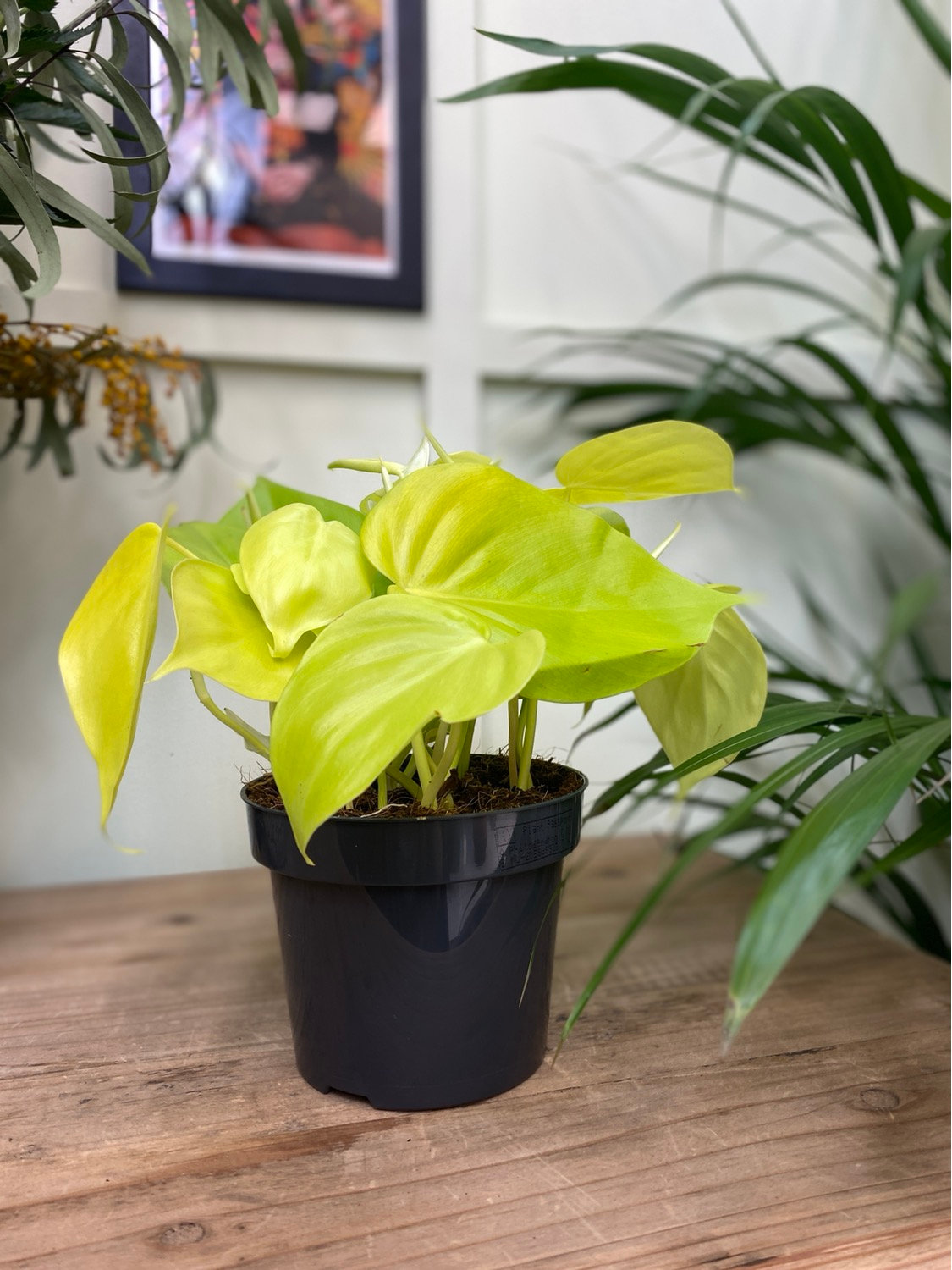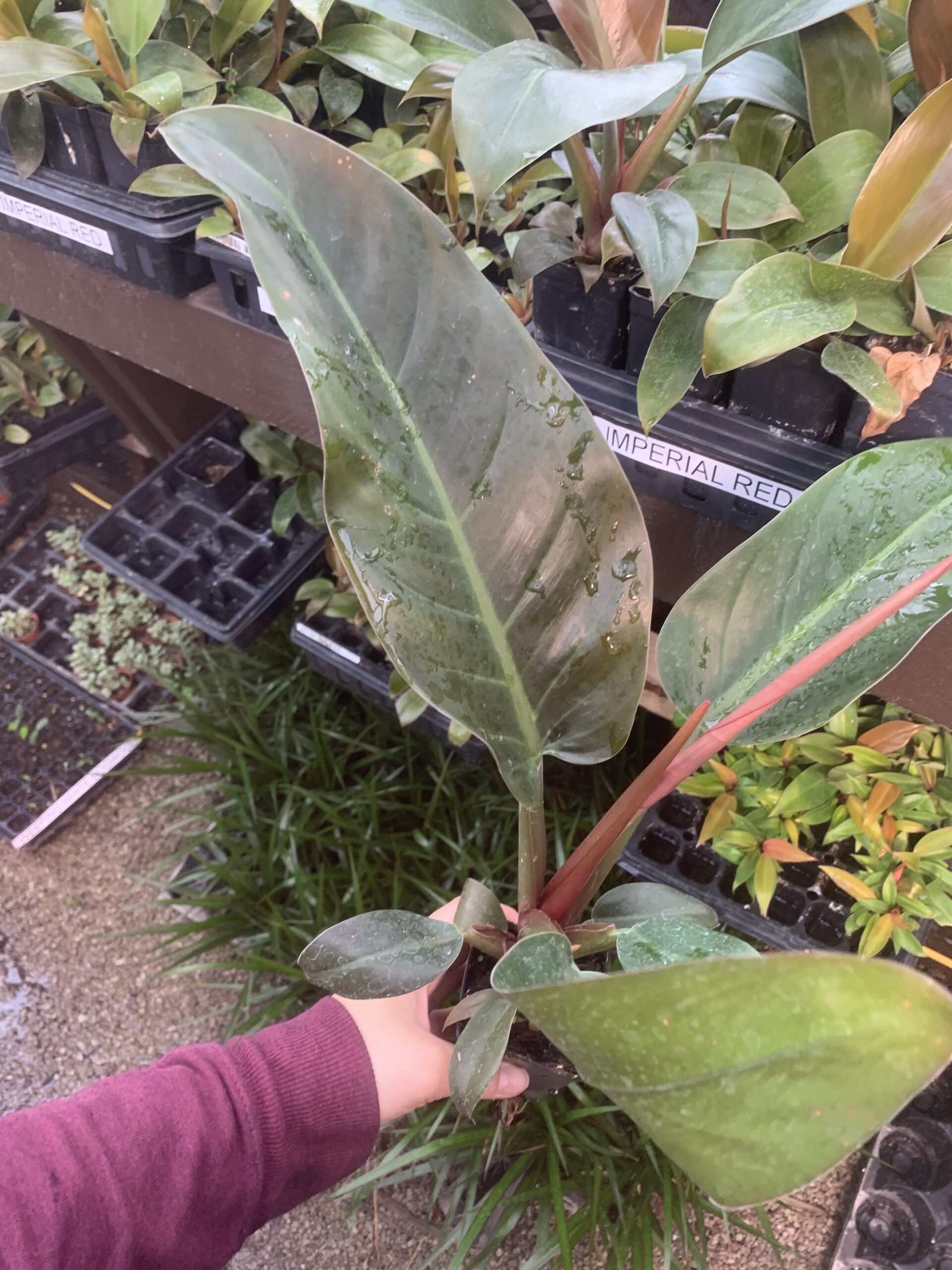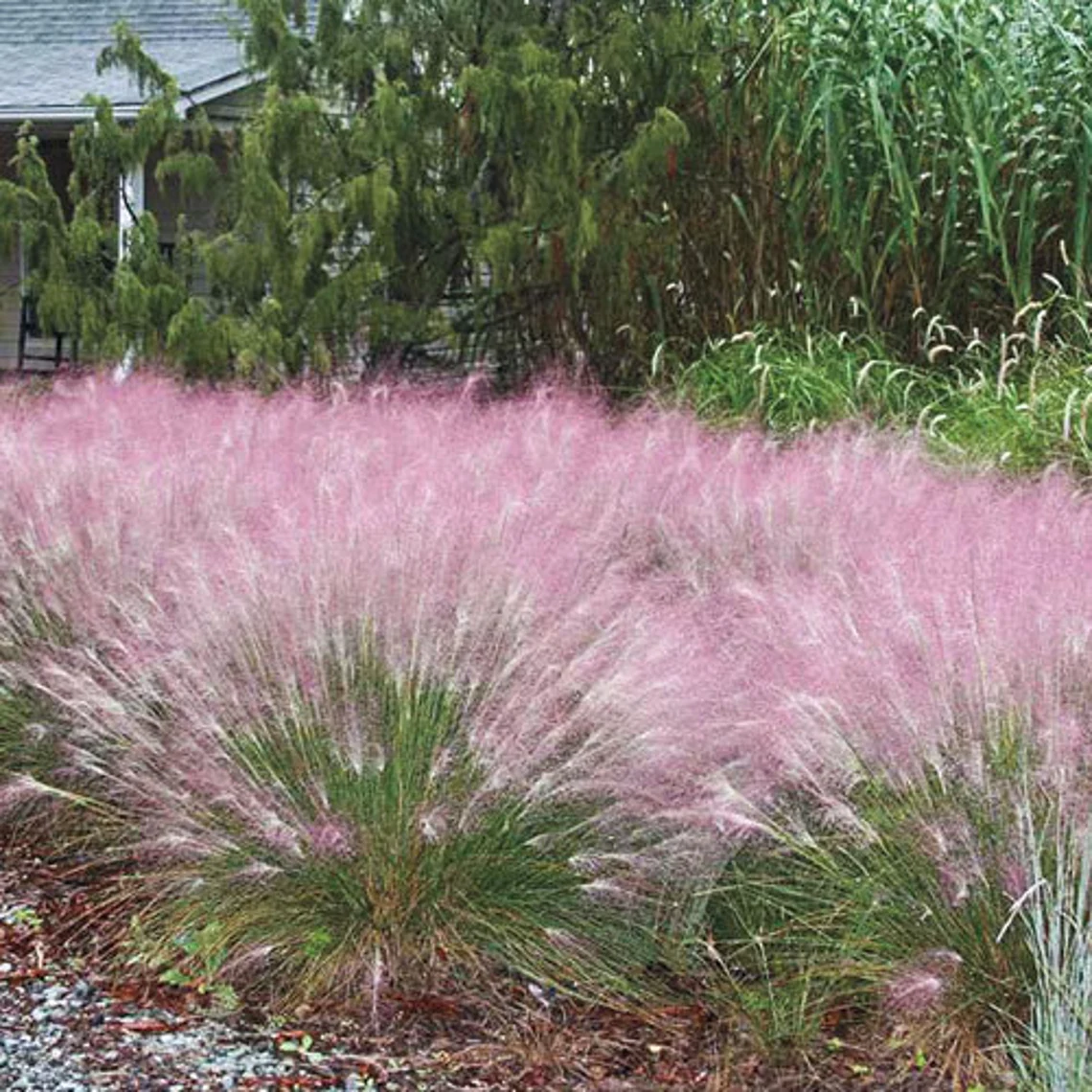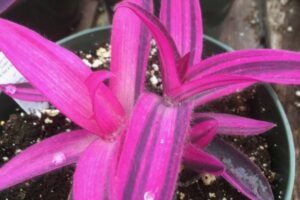Neon Pothos house plant is a trendy houseplant because of it’s natural beauty and light contrast that has gained popularity during the past 3 years. It is very easy to grow and maintain.
So if you are a busy professional or just love house plants Neon Pothos is a great choice.
Pothos Neon is a sub species of Golden Pothos. This is where it gets is bright color from. Here are some interesting characteristics of the house plant.
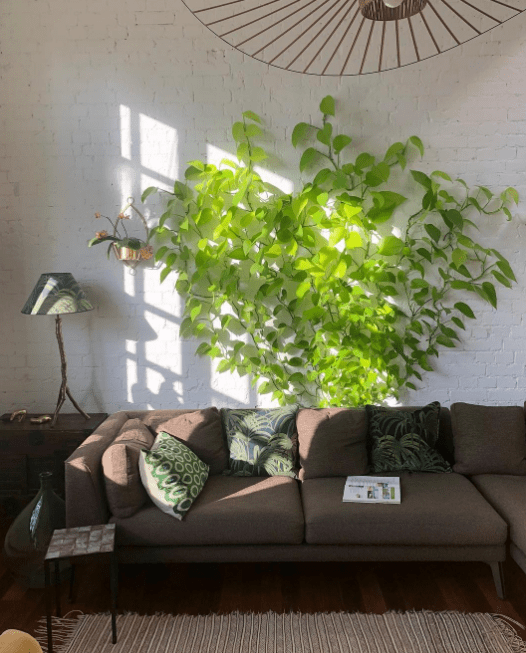
- Scientific Name: Epipremnum Aureum ‘Neon’ Pothos
- Common Names: Devil’s Ivy
- Genus: Epipremnum
- Plant Type: Perennial evergreen houseplant
- Scientific Family: Araceae
- Origin: Indigenous to the Solomon Islands of the South Pacific
- Mature Length: 6 to 10 feet
- Distinguishing Features: Neon Chartreuse Leaves, Trailing Vines
- Home Placement: Away from a Window, Hanging basket
- Growth Speed: Moderate
- Light Requirements: Medium, Indirect
- Watering Requirements: Moist Soil, Dry Out between Waterings
- Soil Requirements: Average, Well-Draining Potting Mix
- Temperature: 60º to 80ºF (15º – 26ºC)
- Fertilizer: Balanced, Water-Soluble Houseplant Fertilizer
- Humidity: Medium to High
- Flowering: Does Not Flower
- Pruning: Prune Dead or Dying Leaves, or to Control Shape and Size
- Propagation: Propagate a Stem with Four Healthy Leaves
- Repotting: Repot every 2 to 3 Years
- Diseases and Pests: Phytophthora Root Rot and Mealy Bugs
- Toxicity: Can be Fatal to Children and Pets
Where to Buy Neon Pothos For Sale?
Etsy has more trusted sellers than of Ebay in our opinion. Try a store like Grounds of Serenity or FC Gardens. They have tons of good reviews and satisfied customers.
Species Description
The Neon Pothos is a subspecies–– or cultivar–– of the Epipremnum Aureum species (synonym: Scindapsus aureus) in the Araceae family, similar to the Jade Pothos.
This vining grower’s broader species goes by many names, such as the Golden Pothos, Marble Queen, and Money Plant.
Neon pothos (Epipremnum ‘Neon‘) is one of the most distinct varieties. Its heart-shaped leaves are bright chartreuse or golden yellow in color with no variegation.
The newer, younger leaves tend to be brighter than older leaves. The foliage deepens in color with age.
Sometimes they are (incorrectly) called lemon lime philodendrons, is unique in its own right! It is indigenous to the Solomon Islands of the South Pacific and loves the tropical climate found there, though it will adapt well to any home environment.
Many plant stores often mislabel Pothos as a philodendron, but the neon chartreuse leaves of this cultivar should clarify any confusion.

Are Pothos and Philodendron the Same Thing?
Pothos and philodendrons are two separate and distinct plants that belong to separate genera. Pothos belongs to the Epipremnum genus, and philodendron belongs to the Philodendron genus.
However, they do exist under the same family, as both pothos and philodendron belong to the aroid plant family (Araceae).
The difference between Pothos and Philodendron is the shape of the leaves. Namely, at the widest part of the leaf. On the left side of the photo above is a Pothos leaf and the right side is a Heart Leaf Philodendron leaf.
Answer. Cut it right below a node. Make sure your chosen stem has at least 3 nodes. Remove all the leaves below the node. This is crucial to ensure that the leaves don’t decay underwater and suffocate the new roots.
Place your cutting in a vase full of clean water and ensure that at least one or two nodes of your pothos cuttings are submerged in water. Also, ensure that you pick a vine cutting that has at least two leaves to encourage quick growing.
Neon Pothos Care
How Do You Care for Neon Pothos?
The Neon Pothos is one of the easiest houseplants to care for, and with its distinctive chartreuse leaves, it should be at the top of your wish-list. They thrive in hanging baskets, anyplace their trailing vines can fall freely or climb a trellis.
The Neon Pothos is one of the easiest houseplants to care for, and with its distinctive chartreuse leaves, it should be at the top of your wish-list.
This tropical plant thrives in hanging baskets, anyplace their trailing vines can fall freely or climb a trellis. Neon Pothos are resilient in low-light and under-watered environments, making them a perfect fit for almost any home.
Pot requirements: Plant in a container 1-2 inches wider than the root ball with adequate drainage holes.
Where to Grow Pothos in Your Home?
These plants can survive almost anywhere, but they prefer specific lighting. If possible, place your house plant in bright indirect light. One option is to put this plant a few feet away from a south-facing window or even near a north-facing window.
Pothos can be kept at offices, bathroom, dine-in area, etc. Try to accommodate them towards the central part of your home. They do well in moderate light conditions but can struggle in direct and intense light.
So, keeping it away from direct sunlight is the key.
How Fast Do They Grow?
Epipremnum aureum neon is an incredibly fast grower, reaching up to 12″ month during its grow season, assuming you have the proper temperature, light, and humidity.
How To Grow Pothos Faster (6 Great Tips You Need To Know)
- Use a nutritional growing medium.
- Provide sufficient bright, indirect sunlight.
- Keep room temperature between 70°F – 90°F.
- Don’t overwater – only water when the soil has dried out.
- Feed the plant with a balanced fertilizer every 2-3 months.
- Keep pests at bay.
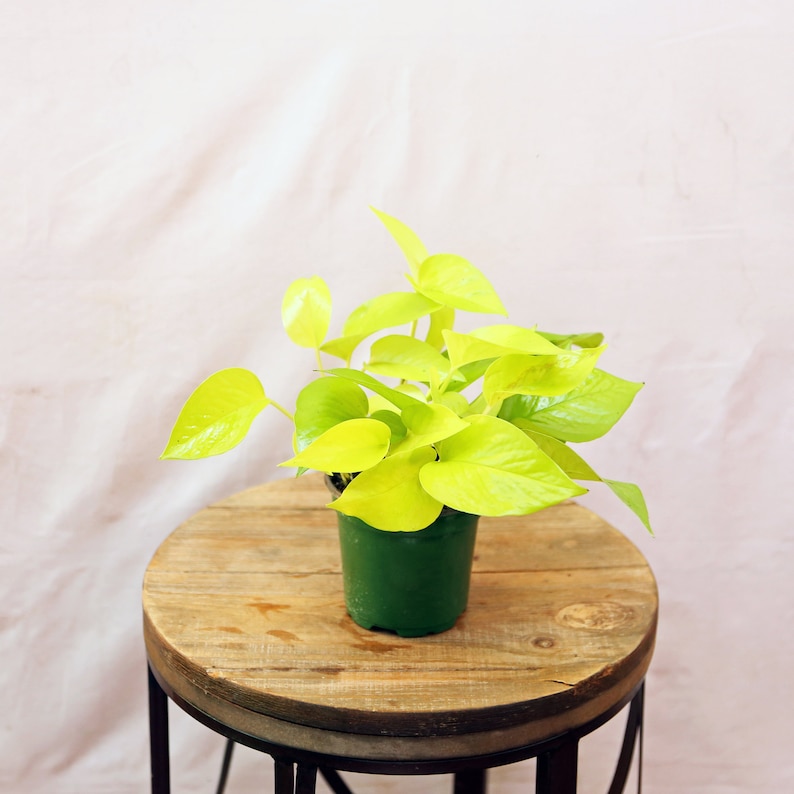
Potting For Neon Pothos
in terms of pot size, it’s generally fine to use a small pot – up to about 6″ for a small to medium size Neon Pothos plant. For the potting material, most options will work fine, including terracotta, clay, plastic, or a ceramic pot.
The main consideration is that it has at least one drainage hole, allowing excess water to drain away. I can’t stress enough how important it is that you have sufficient drainage.
Their root systems do well in small pots, and while their vines are ever-growing, you only need to repot Neon Pothos every few years and the neon leaves aren’t just for looks: if it lacks nutrients required from sunlight or watering, it will lose its variegated (multicolored) shading, signaling to you that love is needed!
Repotting Neon Pothos
Repotting can be stressful for any plant, but being a healthy plant can make this transition easier. I typically recommend you repot during the Neon Pothos growing season. Also, water the plant 2-3 days before you repot.
However, when you repot, you’ll want to move up to a slightly larger-sized pot (no more than a few inches larger), allowing room for your Neon Pothos root ball. If you’re repotting because of root rot (don’t worry – it happens to the best of us), you can use the same-sized pot.
Start by putting a few inches of potting soil mix in the new pot and then place your Neon Pothos plant on the soil. Add new potting soil around the plant.
You can technically use old potting soil or mix, but I recommend using something new that has all its nutrients in place.
At this point, water your Neon Pothos generously but only until the water runs out of the drainage holes. If you’re using a drainage dish to collect the water, be sure to throw it out after about an hour.
If you leave a drainage dish with water it it, it can potentially cause root rot.
What Soil is Best for Neon Pothos?
When potting your Neon Pothos, make sure to use potting mix rather than potting soil. Potting or garden soil will be far too dense and will retain too much moisture, choking and drowning your plant.
Avoiding a dense potting medium is best for almost every houseplant. Choose a loamy (well-aerated) potting mix rich in organic material mixed with just a bit of sand; this will encourage sufficient drainage.
No matter the specifications, don’t expect the Neon Pothos to produce flowers.
Fertilizer Needs
Since the Neon Pothos is such a hardy houseplant, fertilizer is often unnecessary. However, if you want to maximize its growth as quickly as possible, a standard, balanced (20-20-20) indoor plant fertilizer will work well if applied every other month during the spring and summer.
Even without fertilizer, expect your pothos to grow more than six feet long!

Try fertilizing with liquid rather than granules. Liquid fertilizer promotes healthy growth and stops wilt better than granules or pellets. This 3-1-2 Miracle ratio makes living indoor plants thrive in pots, holders, and hangers.
Neon Pothos Propagation
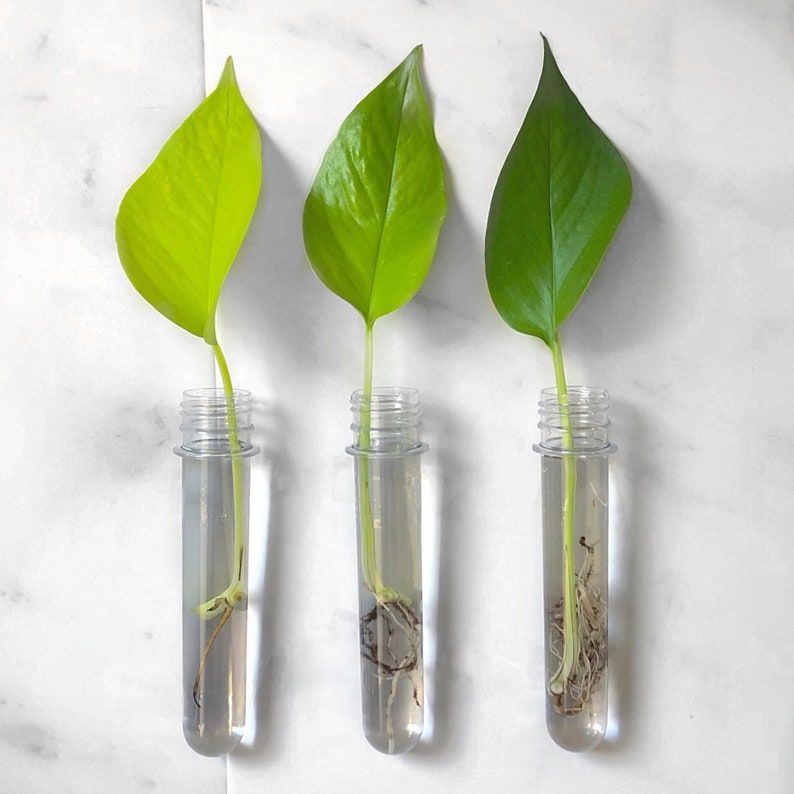
If you want to propagate Neon Pothos into more plants, cut off a healthy stem with about four healthy neon-green leaves on it. Make sure to use very sharp, sterilized kitchen shears to mitigate the damage done to the original plant.
You can soak the cut side in a glass of water for a couple of days until shoots emerge or plant the new cutting directly into some soil. Keep the water moist, and roots should develop within a few weeks!
There are actually a couple of ways you can propagate in water – one will allow you to have a single vine of this Pothos, and one that will make your plant a bit bushier.
Neon Pothos Light Requirements
How much light does Neon Pothos require?
Pothos (Epipremnum aureum) is an attractive trailing vine with heart-shaped leaves that tolerates low light and minimal watering.
Neon Pothos can adapt to low light but prosper in bright, indirect light throughout the year.
Neon Pothos are versatile plants that can thrive in several light conditions, though moderate exposure to bright light is ideal. Low light is sufficient and can be supplemented with fluorescent light or a grow light if needed.
A new plant will need some time to adjust to the lighting conditions in your home, so don’t be discouraged if your Neon Pothos drops a couple of leaves within the first few weeks.
Ensure the Neon Pothos is away from any hot windows as the leaves may burn–– east and north-facing windows are best. Otherwise, a temperature of 60º to 80ºF (15º – 26ºC) is perfect.
If you notice the leaves are losing their variegated details, the Neon Pothos is likely not receiving enough sunlight.
Neon Pothos Air Purifier!
Nasa completed a study of plant purifying plants on common volatile organic compounds (VOCs), including Devil’s Ivy. In this study, it was revealed that Neon Pothos could remove benzene, formaldehyde, xylene, and toluene from the air in our homes.
However, it was not able to remove trichloroethylene or ammonia.
